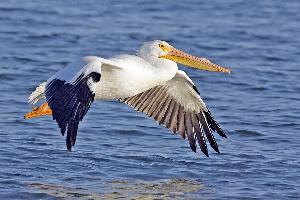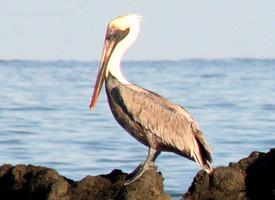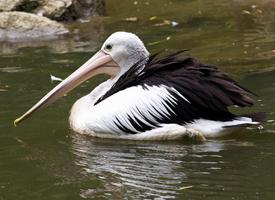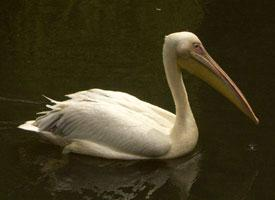
Súlyok és méretek
| Hossz | 50-tól 70-ig cm |
|---|---|
| Súly | 7 kg |
| Szárnyfesztávolság | 110 cm |
Állatleírás
The American white pelican (Pelecanus erythrorhynchos) is a majestic bird that graces the skies and waters of North America with its impressive presence. Known for its large size, striking white plumage, and distinctive bill, this species is among the largest of the North American birds. With a wingspan that can extend up to 9 feet (about 2.7 meters), these birds are built for graceful flight and can glide effortlessly for miles without a single flap of their wings.The American white pelican is easily recognizable by its pure white body contrasted with black flight feathers visible only when its wings are spread. Its long, flat bill, which is orange to bright yellow in color, ends in a large pouch used for feeding. This pouch is not only a tool for scooping up fish but also serves as a cooling mechanism during hot weather when the bird gular flutters to release heat.
Unlike its coastal cousin, the brown pelican, the American white pelican does not dive from the air to catch its prey. Instead, it prefers to feed while swimming. Working in groups, these birds will corral fish into shallow waters to feast upon them more easily, demonstrating a remarkable example of cooperative hunting. Their diet mainly consists of fish, but they will occasionally consume amphibians and crustaceans as well.
Breeding season brings about a transformation in their appearance with the development of a short, fibrous plate on the upper part of their beaks, which is shed once the season is over. They nest in colonies on isolated islands in lakes or rivers, where both parents take part in building the nest, incubating the eggs, and feeding the young. The nests are constructed on the ground and are made from materials such as sticks, reeds, and feathers.
The American white pelican is a migratory bird, spending its summers in the interior of western North America, from southern Canada to northern Mexico, and winters along the coasts, from California and the Gulf of Mexico to Central and South America. During migration, they can be seen in large flocks flying in V formations, utilizing thermals to travel long distances with minimal effort.
Despite their large size and seemingly cumbersome appearance, American white pelicans are skilled fliers and swimmers. Their flight is characterized by slow, powerful wing beats interspersed with glides, and on water, they float with remarkable buoyancy, thanks to air sacs beneath their skin.
Conservation efforts have helped stabilize the American white pelican population, which had faced declines in the past due to habitat destruction, human disturbance, and environmental pollution. Today, they are protected under the Migratory Bird Treaty Act in the United States, which has played a significant role in ensuring their survival.
In summary, the American white pelican is an emblematic bird of North American waterways, embodying grace, cooperation, and resilience. Its striking appearance, fascinating behaviors, and successful conservation story make it a compelling subject of interest for bird watchers, naturalists, and conservationists alike.
Hasonló állatok
Új állatfotók
Top 10 állat
- Dolphin gull (Leucophaeus scoresbii)
- Japanese macaque (Macaca fuscata)
- Stone loach (Barbatula barbatula)
- Russian tortoise (Testudo horsfieldii)
- Galápagos tortoise (Geochelone nigra complex)
- Greek tortoise (Testudo graeca)
- Diana monkey (Cercopithecus diana)
- Common flying dragon (Draco volans)
- Moustached guenon (Cercopithecus cephus)
- Galápagos penguin (Spheniscus mendiculus)


